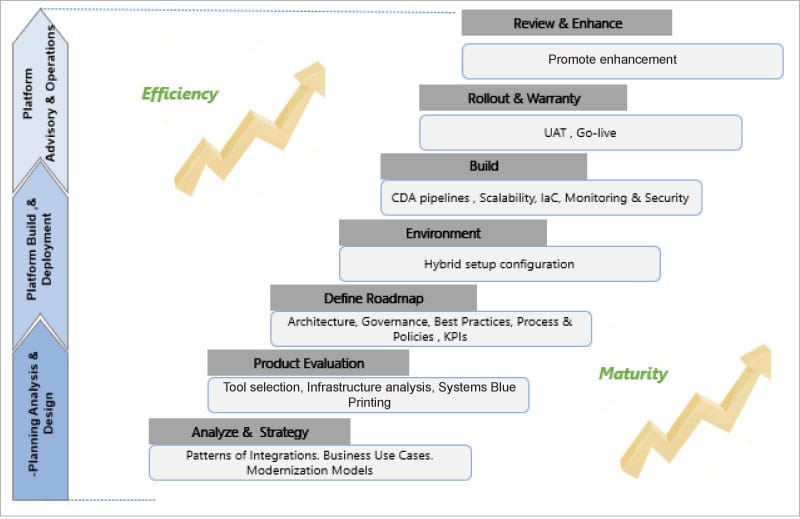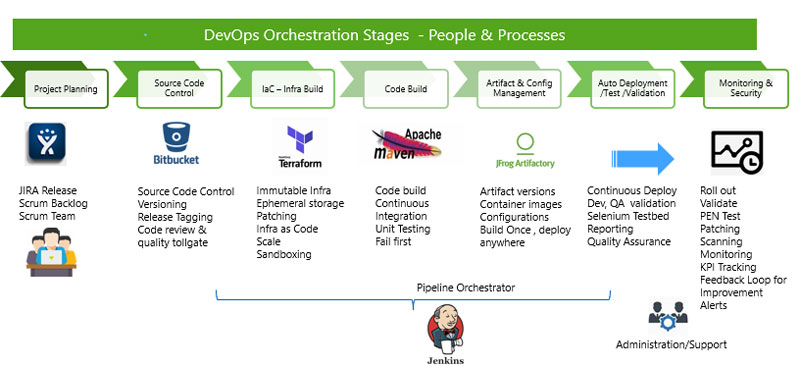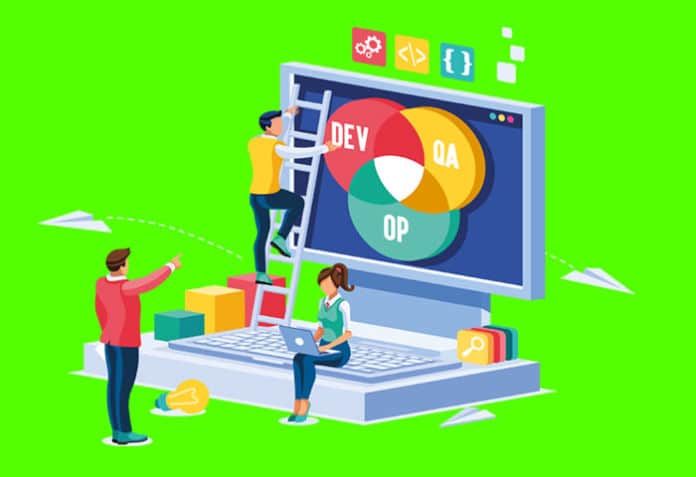Large enterprises are looking to implement efficient site reliability engineering and a DevOps culture that is adaptable, agile and intelligent. But they need to strategise for that.
Whether it is an on-premises or a hybrid environment, the architect looks for synergy. This maturity is factored around various processes, including a questionnaire that collects elementary information about an organisation. Indeed, an enterprise must measure its IT, people, tools, and processes, and then create a path based on this snapshot to plan the DevOps journey. Aligning the company and its people, technology and processes to a strategy is more a philosophical and less a technology or operational change. The success, therefore, is human-centric and incremental over time, based on values.
How a company can embrace DevOps in its culture and maturely deliver services is the key aspect we need to explore. An organisational approach enables faster development of applications and easier maintenance of existing deployments by creating stronger bonds between developers, operations and other stakeholders in the company. How a company formulates it, however, is more crucial for a successful DevOps practice. Typically, it should start with a maturity assessment, gap analysis and strategy formulation before actual implementation and iterative roll-out. At the same time, the company must convince the sponsor, architecture and governance, people, key stakeholders, dev and support line about its needs, feedback loop and improvements. This need with synergy between people and processes. There’s also a demand for stringent security reviews, especially in the post-pandemic digital first era where banks, retail outlets, healthcare services and automotive sectors are seeing the biggest boom in digital marketing and sales. Figure 1 gives a brief outline of typical DevOps absorption in an enterprise with iterative improvement and retrospection at every point.

Analysis and assessment are vital to help understand the operations and delivery processes, deployment, monitoring, reliability, traceability of businesses and technical processes in an organisation’s landscape. This results in creating a minimalistic model of execution, which tailor-fits an enterprise. Key dimensions to be considered while making an assessment are mentioned below:
- Current people processes and operations
- Retrospection, feedback and improvement
- Technology roadmap – cloud focused?
- Iterative
- Development and deployments
- Operational KPIs and SLA management
- Security and governance
- Continuous integration and automated testing
- Time to market and release cadence
This helps to evolve a consolidated strategic and robust DevOps framework, which is scalable and agile enough to improve with time.
An indicative Java app DevOps pipeline approach in Agile iterations is shown in Figure 2, which is self-explanatory with respect to the various stages and tasks associated. Using the power of open source tools, people and operations with well-orchestrated API components for resiliency is the ultimate goal.

Finally, with the advent of machine learning as well as cognitive tools and services, many from the open source fraternity will be bringing in operational intelligence in the near future. In fact, robotic process automation tools and various service management and APM product lines are in the process of creating an intelligent automated framework for DevOps, with security and controls for their enterprise customers to bridge the gap between culture and synergy. An early security review in a fully automated way while releasing product patches may see the biggest traction in the world of malware and spoofing. By 2026, DevOps and DevSecOps in convergence with SysOps will touch a market of around US$ 15 billion, according to a Fortune Business Insights report.




